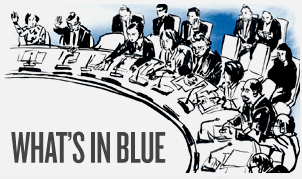AU Mission in Somalia (AMISOM) Reauthorisation
Tomorrow (31 May), the Council is set to reauthorise the AU Mission in Somalia (AMISOM) for another year, until 31 May 2020. Although AMISOM’s mandate remains wholly unchanged, the main issue of contention among Council members during the negotiations concerned the possible drawdown of AMISOM troop levels.
The discussion of troop levels is largely a result of concerns about how to address the security situation in Somalia. In this respect, AMISOM continues to play a critical role in securing main population centres within its area of responsibility; protecting key installations and government facilities; assisting Somali security forces in protecting the Somali authorities and in working towards stabilisation, reconciliation, and peacebuilding; and enabling humanitarian assistance to be delivered to populations in need.
UN-AU Joint Assessment
The negotiations were informed by the findings of the recent joint AU-UN review of AMISOM, contained in a 13 May letter from the Secretary-General to the Council (S/2019/388).
The joint AU-UN review found that the security situation in Somalia remains volatile, with the main security threat still emanating from Al-Shabaab, particularly in southern and central Somalia, where the group controls large parts of rural areas. The increase in the number and frequency of Al-Shabaab attacks in Mogadishu is also a dangerous development, according to the review. The joint review laid down two options for AMISOM’s future configuration, intended to cover the period until the completion of the elections cycle at the end of 2020 or the beginning of 2021:
- maintaining the current troop ceiling while allowing for reductions based on progress on the ground, in light of the slow pace of generating capable Somali security forces; or
- progressively reducing AMISOM’s uniformed personnel ceiling (currently 20,626) by 1,000 or 2,000 troops by the end of February 2020, on the premise that Somalia plans to take over 12 forward operating bases by the end of 2019.
In addition, the review recommends that AMISOM’s police component, now set at a minimum of 1,040 police personnel, be strengthened by two additional formed police units of 160 personnel each, to help compensate for any reduction of AMISOM military personnel.
The review notes that, on the one hand, avoiding further prescribed reductions increases the likelihood of continued insufficient progress on the implementation of the Somali transition plan and on building Somali security capacity within projected timelines. On the other hand, a premature reduction in AMISOM troops based on set timelines runs the risk of exposing civilians to harm due to lack of Somali readiness to take over security responsibilities from AMISOM. Briefing the UN Security Council via VTC on 22 May, AU Special Representative for Somalia and head of AMISOM Francisco Caetano José Madeira made it clear that the AU is opposed to any drawdowns of AMISOM at this point (S/PV.8533), in keeping with the first option presented by the joint assessment. The Secretary-General’s letter on the review notes that progress on Somalia’s transition plan, specifically on generating Somali security forces and building Somali institutional capacity, and a constant assessment of the threat environment, should be the driving factors in determining AMISOM uniformed personnel levels until after the elections planned for 2020-21. The elections themselves, the review continues, are a key indicator of progress on the country’s path towards becoming a fully functioning federal State.
On the pace of the transition itself, the review notes that the threat level in Somalia remains high and that there is a lack of significant progress in implementing the transition plan in the past year, notably the slow pace of generating capable Somali security forces. At the same time, the review notes that Somalia’s plan to take over 12 forward operating bases by the end of 2019 is likely to relieve approximately 2,000 AMISOM troops of their duties.
Negotiation on the Draft Resolution
The initial draft circulated by the UK, the penholder on Somalia, proposed a reduction of 1,000 troops by the end of December, in accordance with the Somali plans to take over 12 forward operating bases at that time and similar to the second option presented in the joint review.
Council members met to discuss the draft on 23 May. While the P3 (France, the UK, and the US) supported the draft, the A3 (Côte d’Ivoire, Equatorial Guinea, and South Africa) opposed any drawdown, in line with the AU position, on the basis that Somalia is not ready to take over more security responsibilities at this juncture. Other Council members, such as China, Kuwait, and Russia, expressed support for A3/AU position, as they felt the views of the region should be respected. Several Council members did not hold strong views and were ready to support a unified Council position.
In an attempt to strike middle ground, a revised text by the UK, discussed among Council members on 28 May, proposed postponing the troop drawdown by two months, until the end of February 2020. The draft text was then put under silence on 29 May. South Africa broke silence on behalf of the A3, however, asserting that any drawdown would be a threat to Somalia and that any troop reductions should be based on a threat assessment undertaken beforehand. South Africa also wanted the resolution to increase the number of police personnel during the electoral period.
The compromise draft resolution in blue retains the language on a 1,000-troop drawdown by the end of February 2020, but at the same time states that the Council will consider adjusting its decision based on the readiness of Somali security forces to take over responsibilities from AMISOM and a joint AU-UN-Somalia threat assessment to be conducted before the planned drawdown. Furthermore, the draft in blue adds that the Council can revise the pace of troop reductions in accordance with developments on the ground.
In addition, while maintaining the minimum number of police personnel at 1,040 as in the current mandate, the draft in blue states that a temporary surge in police personnel will be considered by the Council if the Somali security plan for the elections, which has yet to be developed by Somalia, calls for such an addition. (Under the mandate, AMISOM may add police personnel within the troop ceiling set by the Council).
More generally, the UK draft aims at consolidating previous AMISOM resolutions into a shorter and more concise text. The draft resolution is considerably shorter than resolution 2431 containing AMISOM’s current mandate. Germany argued that language on climate change should be retained from the preambular part of resolution 2431 after it had been removed in the effort to streamline the draft. That resolution recalled the 2011 presidential statement (S/PRST/2011/15) that Germany spearheaded when it was last on the Council and “recognis[ed] the adverse effects of climate change, ecological changes and natural disasters among other factors on the stability of Somalia, including through drought, desertification, land degradation, and food insecurity, and emphasising the need for adequate risk assessment and risk management strategies”.
A few other Council members also took the view that the adverse effects of climate change are of particular relevance in the Somali context, thus supporting the German position. In the end, the draft in blue retains much of the language on climate change but removes reference to the 2011 presidential statement.
Similar language on climate change in the operative clauses resolution 2461 of 27 March, renewing the mandate of the UN Assistance Mission in Somalia (UNSOM), was initially opposed by the US. Though eventually the resolution was adopted unanimously, the US said in its explanation of vote that the Council “should focus specifically on assessing risks and developing risk-management strategies related to the impacts of drought, desertification, and food and water scarcity, rather than on any particular potential cause of those impacts, such as climate change” (S/PV.8494).

